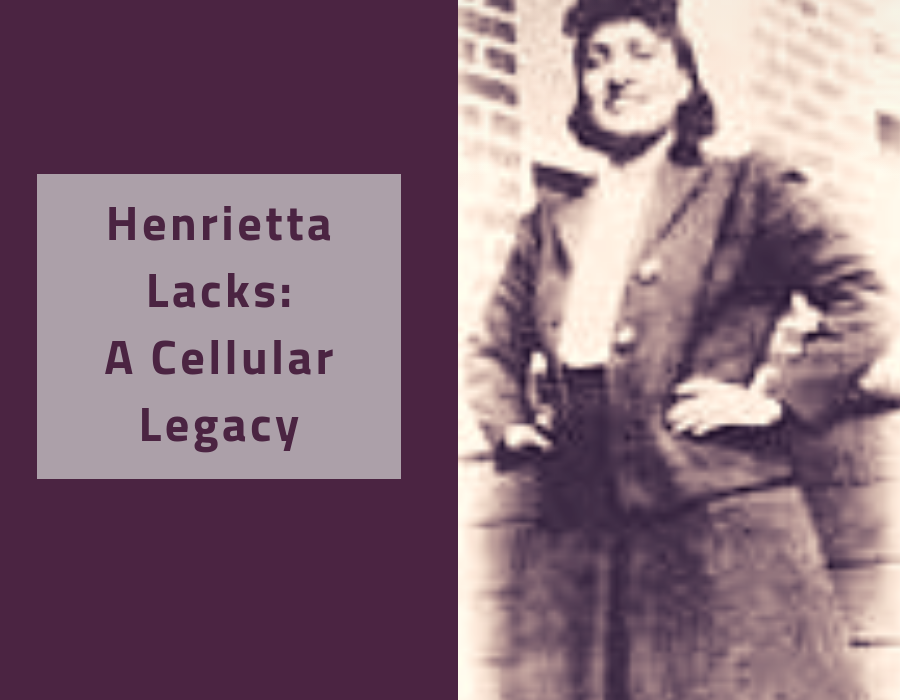By Madeeha Hoque
October is a month dedicated towards the celebrations and vital contributions Black History has offered to help shape the world as we know it today. Known also as Afro-American History month and celebrated in February by both the United States and Canada, Black History Month takes place in October for the United Kingdom, Republic of Ireland and the Netherlands. So what better way is there to celebrate black history, than to delve deep into the contributions black history has had on science to date? Let’s talk Henrietta Lacks, whose cancer cells were the source of the all-important and immortalised HeLa cells – the most incredible cell-line in medical history and research to date.
A lot of the general public have not heard of even an utter about Henrietta Lacks. We’re here to change that. Her legacy being more well-known to ‘HeLa cells’, Lacks holds an incredibly important stature within the science community, with her vital contribution towards science seeing no bounds. Born as Loretta Pleasant, Henrietta was your average, Afro-American woman born in the 1920’s, living in the U.S. She was not a scientist by any means, however. So, what makes her so famous and well-known within the science field?
Henri etta went about her day to day life, living peacefully, until she began to feel as if there were a ‘knot’ inside of her womb. Brushing the pain off as perhaps pregnancy – which came to be true – shortly after she had given birth to her fifth child, Lacks suffered from a severe haemorrhage and was later diagnosed with cervical cancer in 1951. Initially, she was diagnosed with epidermoid carcinoma – a cancer formed from squamous cells. A study on her autopsy later in 1970, however, proved that she had been misdiagnosed and had actually suffered from adenocarcinoma – a different type of cancer which originates from the excessive and unregulated growth of epithelial tissue. A common mistake made in those days, regardless of the different types of cancer diagnosis received, the radium treatment she underwent for her medical condition would have remained the same. Henrietta Lacks passed away in hospital on October 4th, 1951.
etta went about her day to day life, living peacefully, until she began to feel as if there were a ‘knot’ inside of her womb. Brushing the pain off as perhaps pregnancy – which came to be true – shortly after she had given birth to her fifth child, Lacks suffered from a severe haemorrhage and was later diagnosed with cervical cancer in 1951. Initially, she was diagnosed with epidermoid carcinoma – a cancer formed from squamous cells. A study on her autopsy later in 1970, however, proved that she had been misdiagnosed and had actually suffered from adenocarcinoma – a different type of cancer which originates from the excessive and unregulated growth of epithelial tissue. A common mistake made in those days, regardless of the different types of cancer diagnosis received, the radium treatment she underwent for her medical condition would have remained the same. Henrietta Lacks passed away in hospital on October 4th, 1951.
Her contribution towards science, however, remains immortal. During her treatment for cancer in Johns Hopkins Hospital in Baltimore, Maryland, unbeknownst to Henrietta, two different samples of her cells were taken: a sample of cancerous cells from Lacks’ biopsied tumour from her cervix, as well as a sample of normal-functioning, healthy tissue. These cells were taken without Henrietta’s knowledge and consent and were handed over to a cancer researcher in the hospital, known as George Otto Gey.
Permission for such retrieval and use was not needed back then, therefore, use of patient cells for research without consent, was seen as common practice.
George Gey often collected samples from cancerous patients from the hospital in order to use them in his own research into cancer. He would find that the cells obtained from patients would often die quicker than needed in order to carry out in-depth experiments. However, upon receiving Henrietta’s samples, both Gey and the science community found themselves heavily in luck. From conducting research on Lacks’ cancerous cells, Gey found that her cells were very unique, in the sense that they reproduced at an incredibly high rate. This meant that cultures could be kept alive for long periods of time, allowing further experimentation on the same tissue batch, and in-depth observations to be carried out. Whereas previous cell samples from other patients simply could not withstand multiple experiments and would die in a couple of days, Henrietta Lacks’ cells would double almost every 20-24 hours.
This is from where her cells received the title ‘immortal’, since they would double and divide without dying and continued to do so at a relative rate.

After Lacks’ death, Gey collected further samples from Henrietta’s autopsy and isolated a single cell, replicating it continuously in order for the same cell to be used in a number of different experiments. Due to being able to reproduce indefinitely (under specified conditions), Henrietta’s immortalised cell line still continues to divide today and is a highly sought-out and important source of medical research in today’s science community. Dubbed as the ‘HeLa immortal cell line’, due to the first two letters of the Henrietta’s first and last names, these cells went on to help advance medical research greatly in the years to come, and as such, is still relevant to this day.
The HeLa cell-line led to various important and vital breakthroughs within the science field. The most well-known example of such case being the polio vaccine, which was developed by Jonas Salk in 1954 – successful with the aid of HeLa cells. In order to test the new vaccine, Henrietta’s famous immortal cells were mass-produced (or should we say, mass-reproduced) to test the vaccine and deem it safe for administering to the public.
Lacks’ cells are also famous for being the first successfully cloned human cells, in 1955, and have since been reproduced to about 20 tonnes of cells.
HeLa cells were – and still remain – to be in high demand by scientists globally, used for various different kinds of scientific research. Examples of such research include experiments detailing into cancerous cells, gene mapping, drugs, AIDS and are also used in order to better understand the human genome and the effects of poisoning, toxins, virus behaviour and various degrees of radiation. They are also used in order to test human sensitivity to various substances, such as cosmetics, glues and many other commercial products in order to test human safety before general use and selling towards the public. The mass release of HeLa cells has allowed experimentation and observation of many products without the need to test on humans or animals beforehand, which is an amazing feat in itself, having prevented lots of damage and health hazards altogether.
So, Henrietta Lacks. One of the most influential and important figures in science history, without even having known the massive effect she had impacted herself. Without Henrietta’s incredible, immortal cell-line, a lot of today’s vaccines and understanding of various scientific matters would not be possible – or at least, would have been substantially slowed down. Here’s to a wonderfully unique lady, who goes down in both black history and science history, admirably.
Sources:
Batts, Denise Watson (2010-05-10). “Cancer cells killed Henrietta Lacks – then made her immortal”. The Virginian-Pilot.
Skloot, Rebecca (2010). “The Immortal Life of Henrietta Lacks”. New York City: Random House
Skloot, Rebecca (March 2001). “An Obsession With Culture”. University of Pittsburgh/PITT Magazine
Gold, Michael (1986). “A Conspiracy of Cells: One Woman’s Immortal Legacy-And the Medical Scandal It Caused”.
Smith, Van (2002). “Wonder Woman: The Life, Death, and Life After Death of Henrietta Lacks, Unwitting Heroine of Modern Medical Science”. Baltimore City Paper
Lucey, Brendan P.; Nelson-Rees, Walter A.; Hutchins, Grover M. (2009-09-01). “Henrietta Lacks, HeLa Cells, and Cell Culture Contamination”. Archives of Pathology & Laboratory Medicine





IWD 2019: Celebrating Women In Science – Seeking Science
[…] Henrietta Lacks: A Cellular Legacy […]